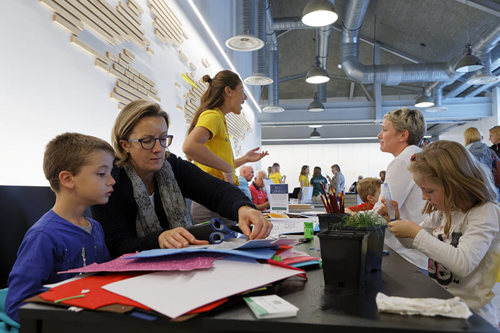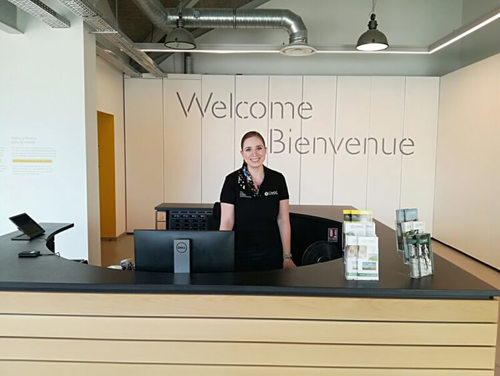27 January 2020
Our first year at The CWGC Experience
After an incredible first year, we’re gearing up to reopen The CWGC Experience for 2020. Visitor Centre Coordinator, Lucie Boidin, recalls her favourite parts of working at The Experience during its inaugural year and gives a hint at what visitors can expect when they arrive.

Since The CWGC Experience has opened, more than 5000 people from many different places have come to see the work by our staff and realise for themselves the scale of the CWGC’s commitment all over the world.
Greeting each and every one of those people and ensuring their visit is worthwhile has already been a great experience. People start the tour either knowing – in part – of the Commission’s work and eager to discover more, or just curious about those patches of land so immaculately maintained (big or small) that have become part of the landscape. An hour or so later, the reactions are nearly always the same: amazement at how much work goes into remembering the 1.7 million service men and women fallen around the world, and admiration at the skill and dedication shown by our staff.
 It’s always gratifying to see how the visit leaves an impact when people come back to the front desk, and I often hear them use words like “amazing” or “fascinating”. Many of the questions they had at the beginning of their visit are answered and they often want to know even more. Why are there different types of stones in the sites? When was Portland stone used again? How do you choose what plant to grow in the cemeteries? What happens when you only find part of a body?
It’s always gratifying to see how the visit leaves an impact when people come back to the front desk, and I often hear them use words like “amazing” or “fascinating”. Many of the questions they had at the beginning of their visit are answered and they often want to know even more. Why are there different types of stones in the sites? When was Portland stone used again? How do you choose what plant to grow in the cemeteries? What happens when you only find part of a body?
Questions about recovering soldiers and identifying them come up often. This is usually the part of the tour people cite the most and find incredibly fascinating. Seeing how, even after over a hundred years later, we handle the people we find with care and respect and how we try to identify them raises a lot of interest. That part of the tour leaves visitors wanting to know more about the process of identification, or more stories about soldiers who were found and identified.
Another memorable part of the tour is seeing our craftsmen at work through the windows. Even though visitors can’t talk to the staff, they still find ways of letting them know they appreciate their work – by lingering in front of the windows and giving thumbs up gestures when they make eye contact with them. Some people even want to buy some of the pieces they have seen in the workshops, like the wooden benches or ornate metal gates, to install back home!
Finally, the map in the hall brings home just how global the CWGC’s work is. Truly an eye-catcher, it leaves a real impact and raises more questions, like how and why some service men and women are commemorated in far flung countries.

Having worked in the remembrance tourism before, I find that being at the front desk of a CWGC facility means having a different contact with the public. People share more of themselves and talk about family lost during the war. It’s always moving when you help people find the site their relative is commemorated at, or when you hand over a certificate. Equally moving is the story of the family who could not visit the grave of their relative in Iraq but left a hand painted stone in remembrance of him.
Working at The Experience means not only helping visitors with any information they might be looking for, but also learning more about the people the Commission commemorates. I now have a better insight into what we do thanks to the craftsmen with whom I talk to every day. It’s a journey for everyone!
The CWGC Experience was awarded the Best Tourism Project in Europe at the 2019 British Guild of Travel Writers’ International Tourism Awards and will reopen to the public on 3 February 2020. Find CWGC Experience visiting information here.

